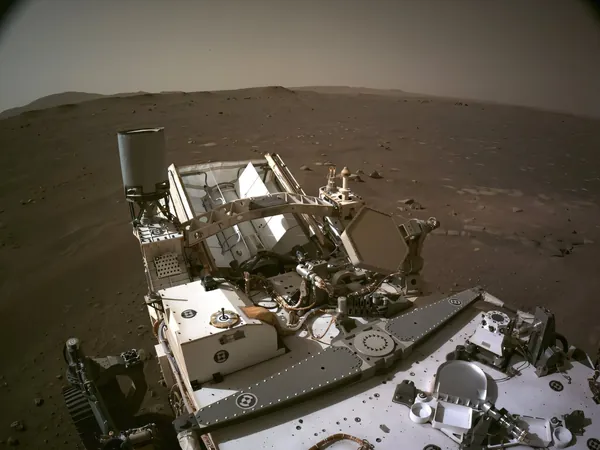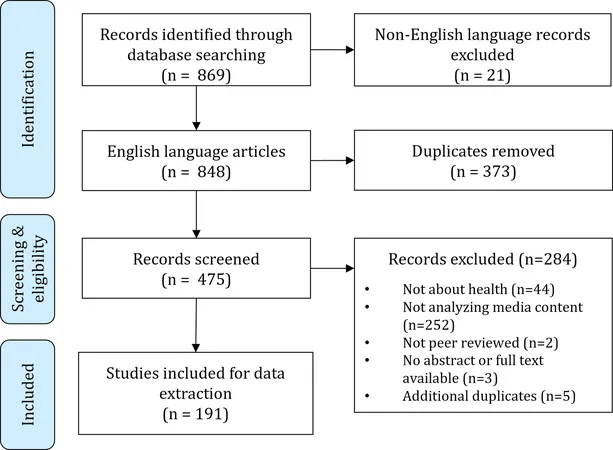
NASA Turns to SpaceX and Blue Origin to Slash Mars Mission Costs – Here's What You Need to Know!
2025-01-08
Author: Benjamin
NASA's New Strategy for Mars Sample Return Mission
In a groundbreaking revelation, NASA has announced that it may enlist the help of SpaceX, led by Elon Musk, or Blue Origin, headed by Jeff Bezos, to tackle the escalating costs associated with its Mars Sample Return mission. Originally, NASA aimed to bring 30 sample tubes collected by the Perseverance rover back to Earth by the 2030s. However, due to budget overruns and delays, the space agency is seeking more cost-efficient partnerships.
The Competition Heats Up
This shift in strategy arrives amidst news that China is advancing on its own sample return mission to Mars, which could potentially launch as early as 2028. As the race for Martian exploration heats up, the possibility of other nations achieving milestones in space exploration serves as a crucial motivator for NASA to expedite its own plans.
Innovative Robotic Designs
Bill Nelson, the outgoing NASA Administrator, detailed on Tuesday that the agency is contemplating two innovative designs for a robotic platform that would land on Mars. A decision on the selected architecture is anticipated by mid-2026.
The first design involves NASA's trusted Sky Crane system, a proven technology that successfully delivered both the Curiosity and Perseverance rovers to the Martian surface in 2012 and 2021, respectively. The second option proposes a "heavy lift lander" created by a commercial partner to deploy necessary equipment on Mars.
Collaboration Opportunities
"What’s promising is that both SpaceX and Blue Origin have expressed interest, but we are open to collaborations with other companies as well," Nelson stated.
Mars Ascent Vehicle
No matter which design is chosen, the lander will be equipped with a compact Mars Ascent Vehicle, which is a lightweight rocket designed specifically to launch the sample tubes into orbit around Mars. The next phase of the mission involves the European Space Agency's (ESA) Earth Return Orbiter, which will retrieve the samples for the trip back home.
Energy Solutions for Mars Missions
In a significant strategic change, NASA plans to forego solar panels, which pose risks during Mars's frequent dust storms, opting instead for a nuclear battery that will provide consistent heat and energy for the lander.
Cost Analysis and Timelines
Cost analysis indicates that utilizing the Sky Crane option could keep expenses between $6.6 billion and $7.7 billion—substantially lower than the previously estimated $11 billion. If NASA successfully partners with commercial providers, they could further reduce expenditures to between $5.8 billion and $7.1 billion. The expected returns of this mission could occur between 2035 and 2039, a notable advancement compared to the earlier target of 2040.
Challenges Ahead
However, the timeline remains subject to various factors including annual funding from Congress and whether NASA and ESA opt for a direct return path or a more complex route involving a detour to the Moon's orbit for sample retrieval.
A Race Against Time
With the possibility of a Chinese mission delivering Martian samples long before NASA, the stakes are high. Nelson, however, has downplayed the competition, stating that "our mission is incredibly complex and meticulously planned by the global scientific community."
Perseverance's Ongoing Mission
The Perseverance rover, which landed on Mars in 2021, continues its quest to uncover evidence of ancient microbial life from a time when the planet was warmer and possibly more hospitable.
Looking Ahead
Stay tuned as NASA's plans unfold—will they outpace international rivals in the race to return Martian samples? The next few years will be critical.









 Brasil (PT)
Brasil (PT)
 Canada (EN)
Canada (EN)
 Chile (ES)
Chile (ES)
 Česko (CS)
Česko (CS)
 대한민국 (KO)
대한민국 (KO)
 España (ES)
España (ES)
 France (FR)
France (FR)
 Hong Kong (EN)
Hong Kong (EN)
 Italia (IT)
Italia (IT)
 日本 (JA)
日本 (JA)
 Magyarország (HU)
Magyarország (HU)
 Norge (NO)
Norge (NO)
 Polska (PL)
Polska (PL)
 Schweiz (DE)
Schweiz (DE)
 Singapore (EN)
Singapore (EN)
 Sverige (SV)
Sverige (SV)
 Suomi (FI)
Suomi (FI)
 Türkiye (TR)
Türkiye (TR)
 الإمارات العربية المتحدة (AR)
الإمارات العربية المتحدة (AR)